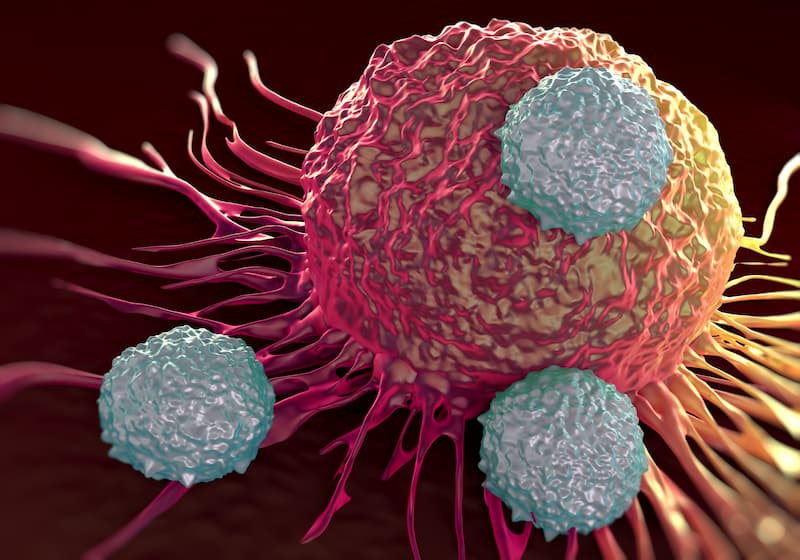Data Show Disease Control With Inavolisib in Advanced PIK3CA+ Solid Tumors
Investigators are currently assessing possible predictors for response to inavolisib as part of the phase 2 CRAFT trial.
“Inavolisib had a favorable safety profile and led to a DCR of 60% at 8 weeks and 32% week 16 in this cross-entity patient population,” according to lead study author Christoph E Heilig, MD.

Disease control and favorable safety were observed among patients with PIK3CA-mutated locally advanced or metastatic solid tumors who received inavolisib (GDC-0077), according to findings from the phase 2 CRAFT trial (NCT04551521) presented at the 2024 European Society of Medical Oncology Congress (ESMO).
At a median follow-up of 11.2 months, efficacy-evaluable patients (n = 25) achieved a disease control rate of 60% at week 8 and 32% at week 16. At week 8, 4 patients had experienced a partial response (PR), and 15 total had disease control. At week 16, 6 patients of the original 15 patients who had disease control at week 8 transitioned to progressive disease, including 1 patient who had achieved a PR; 8 patients had disease control comprised of a response or stable disease (SD). One tumor-related death was reported at week 16 among the patients who had disease control at week 8.
Additionally, the median progression-free survival was 3.52 months, and the 12-month overall survival rate was 51%.
“Inavolisib had a favorable safety profile and led to a DCR of 60% at 8 weeks and 32% week 16 in this cross-entity patient population,” lead study author Christoph E Heilig, MD, of the Department of Translational Medical Oncology, National Center for Tumor Diseases, Heidelberg and German Cancer Research Center, and colleagues wrote in a poster presentation of the data.
The Design of CRAFT
CRAFT is an open-label, 7-arm study evaluating the efficacy of combinations of molecularly targeted agents and PD-L1 inhibition with atezolizumab (Tecentriq) in patients with cancers harboring targetable molecular alterations. The analysis presented at ESMO focused on arm 5 of CRAFT.
Each arm of the study evaluated the treatment of adult patients with locally advanced/metastatic cancer refractory to 1 or more treatments, and patients were selected based on molecular tumor characteristics. Arm 1 included patients with BRAF V600E/K mutations; arm 2 featured patients with ERBB2 amplification/overexpression and activating ERBB2 mutations; arm 3 included patients with ALK rearrangements/mutations; arm 4 enrolled those with aberrations predicting increased PI3K-AKT pathway activity; arm 5 included patients with activating PIK3CA mutations; arm 6 included patients with aberrations predicting increased RAF-MEK-ERK pathway activity; and arm 7 featured patients with alterations predicting anti–PD-L1/anti–PD-1 sensitivity.
Patients were excluded from enrollment if they presented with either a hematologic malignancy or primary brain cancer.
A total of 101 patients were enrolled onto CRAFT, and 72 were treated. In arm 5, 25 patients received oral inavolisib at 9 mg once daily in 28-day cycles. Notably, the trial utilized a Simon’s optimal 2-stage design with 14 patients accrued in stage I. If 4 or more patients achieve disease control, consisting of a response or SD per RECIST 1.1 criteria at day 110, an additional 11 patients were accrued in stage II.
Treatment With Inavolisib
The 25 patients with PIK3CA-mutated tumors enrolled onto arm 5 of CRAFT were selected based on results from gene-panel testing, whole-genome sequencing/whole-exon sequencing, and transcriptome analyses in NCT MASTER; for 21 of these patients, a broad molecular analysis in NCT MASTER was available.
Notably, the most frequently observed PIK3CA mutations were E545K (n = 10), E542K (n = 6), H1047R/L (n = 3). Five patients had double mutations in PIK3CA.
In total, 7 patients achieved disease control at week 16. They included a male patient 50 years of age with esophageal squamous cell carcinoma and a E545K alteration who had SD; a male 51 years of age with chordoma and a E545K alteration who had SD; a male patient 70 years of age with urethral squamous cell carcinoma and a E542K alteration who achieved a PR; a female 51 years of age with cervical squamous cell carcinoma and an H1047R alteration who had SD; a female patient 69 years of age with anal squamous cell carcinoma and an E545K alteration who had a PR; a male 79 years of age with salivary duct carcinoma and a G1049R alteration who had a PR; and a male 66 years of age with chordoma harboring both E453K and Q546R alterations who achieved SD.
The most frequently noted adverse effects in arm 5 included hyperglycemia (46%), diarrhea (46%, fatigue (29%), and constipation (17%), which all occurred at mostly grade 1 or 2.
“Further investigations regarding possible predictors for response and mechanisms of resistance are ongoing,” study authors concluded.
Reference
Heilig CE, Teleanu MV, Desuki A, et al. Inavolisib in cancers with activating PIK3CA mutations: results from the CRAFT trial. Presented at: 2024 ESMO Congress; September 13-17, 2024; Barcelona, Spain. Poster 198P.
Newsletter
Stay up to date on recent advances in the multidisciplinary approach to cancer.
Elevating the Quality of Cancer Care via Cross-Department Collaboration
Experts from Sibley Memorial Hospital discuss how multidisciplinary work has enhanced outcomes such as survival and resource use at their institution.
Elevating the Quality of Cancer Care via Cross-Department Collaboration
Experts from Sibley Memorial Hospital discuss how multidisciplinary work has enhanced outcomes such as survival and resource use at their institution.
2 Commerce Drive
Cranbury, NJ 08512
All rights reserved.